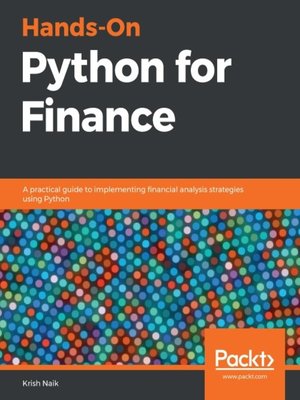
Sign up to save your library
With an OverDrive account, you can save your favorite libraries for at-a-glance information about availability. Find out more about OverDrive accounts.
Find this title in Libby, the library reading app by OverDrive.



Search for a digital library with this title
Title found at these libraries:
| Library Name | Distance |
|---|---|
| Loading... |
Learn and implement quantitative finance using popular Python libraries like NumPy, pandas, and Keras
Key Features
Book Description
Python is one of the most popular languages used for quantitative finance. With this book, you'll explore the key characteristics of Python for finance, solve problems in finance, and understand risk management.
The book starts with major concepts and techniques related to quantitative finance, and an introduction to some key Python libraries. Next, you'll implement time series analysis using pandas and DataFrames. The following chapters will help you gain an understanding of how to measure the diversifiable and non-diversifiable security risk of a portfolio and optimize your portfolio by implementing Markowitz Portfolio Optimization. Sections on regression analysis methodology will help you to value assets and understand the relationship between commodity prices and business stocks. In addition to this, you'll be able to forecast stock prices using Monte Carlo simulation. The book will also highlight forecast models that will show you how to determine the price of a call option by analyzing price variation. You'll also use deep learning for financial data analysis and forecasting. In the concluding chapters, you will create neural networks with TensorFlow and Keras for forecasting and prediction.
By the end of this book, you will be equipped with the skills you need to perform different financial analysis tasks using Python
What you will learn
Who this book is for
This book is ideal for aspiring data scientists, Python developers and anyone who wants to start performing quantitative finance using Python. You can also make this beginner-level guide your first choice if you're looking to pursue a career as a financial analyst or a data analyst. Working knowledge of Python programming language is necessary.







